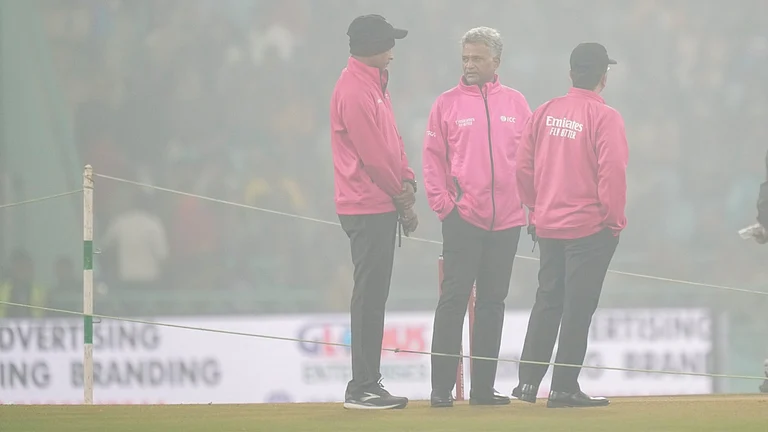The demise of the legendary Malayalam filmmaker K G George triggered a debate around retirement homes and geriatric care in Kerala. On September 24, George breathed his last in an old age home in Kochi, sparking an unexpected social media debate. This debate dragged George’s wife, Salma, who had been residing in Goa, into an unpleasant controversy surrounding her husband’s demise in institutional care as though she had neglected him.
Salma and their daughter, Thara, found themselves compelled to provide clarifications in response to the scrutiny. They emphasised how content and fulfilled George had been during his time at the institutional care facility. Both Salma and Thara explained that this was a conscious choice made by George himself. He had wanted to spend his final days in the embrace of institutional care. In essence, the multifaceted filmmaker wished to retain his versatility even in his personal life.
Nevertheless, this debate unearthed a deep-rooted societal stigma in Kerala concerning retirement homes and institutional care for the elderly. Often, institutional care, colloquially referred to as ‘old age homes’, is perceived as a place where family members discard their elderly loved ones.
According to the 2022 Kerala Economic Review, the state holds the top position in terms of the proportion of elderly people, accounting for 16.5 per cent of the total population. Projections indicate that by 2031, this figure will rise to 20.9 per cent. At the national level, the annual growth rate of the elderly population is projected to be 3.28 per cent, while in Kerala, it is higher at 3.96 per cent.
The percentage of elderly individuals has been steadily increasing throughout the entire country in recent years, and this trend is expected to persist in the years to come. It is estimated that the share of the population over the age of 60 will rise from 8 per cent in 2015 to 19 per cent in 2050. According to Census 2011, the percentage of the population in the age group 60 years and above to the total population was 12.6 for Kerala as against the national average of 8 per cent. The old-age dependency ratio was 19.6 per cent for Kerala and 14.2 per cent for India. The Old Age Dependency Ratio (OADR), defined as the number of persons aged 65 years and over per 100 persons of working age (20 to 64 years), is the most commonly used indicator for monitoring changes in the age structure of the population according to experts.
As per the Kerala Economic Review of 2022, the Old Age Dependency Ratio (OADR) is anticipated to reach 20.1 per cent at the national level by the year 2031. However, within the state of Kerala, the Old Age Dependency Ratio is projected to be notably higher, standing at 34.3 per cent by the same year. A glaringly notable gender disparity also exists in the Old Age Dependency Ratio across various Indian states. Specifically, states such as Kerala, Tamil Nadu, Himachal Pradesh, and Punjab exhibited a significantly elevated female old-age dependency ratio when compared to their male counterparts.
Recent trends indicate a noteworthy transformation in the state’s perspective on geriatric care. In a society characterised by a high rate of migration, there exists a compelling need to dispel the stigma surrounding the term ‘old age homes’.
“I think the problem lies with this very term ‘old age home’,” says George Mathew, a Malayali IT Professional settled in the United States of America. He contends that this label carries connotations of a place where elderly parents are consigned against their will, a perception that needs reconsideration.
George elaborates on his own situation, stating, “My sister and I, both residing outside Kerala, faced the challenge of caring for our ageing parents. Despite having a spacious family home in our village, the absence of family members to provide care led us to explore institutional care for our parents.” His parents, retired government servants aged 72 and 65, consciously chose to reside in an institutional care facility over their own home in their village.
While Salma and Thara, the wife and daughter of K G George, faced online harassment, there emerged a substantial wave of support in their favor. Social media platforms were awash with personal narratives from individuals who have consciously chosen Institutional Care for their elderly parents rather than leaving them in a home environment where there is a lack of adequate caregiving. Numerous Malayali expatriates have expressed relief at having access to dependable retirement homes within State, providing them with the option to entrust their parents to Institutional Care.
It is pertinent to see that such alternatives are predominantly accessible only to those with financial means. Government-provided data underscores that Institutional Care in the state is primarily a domain of the private sector. The Department of Social Justice oversees only 16 old age homes, whereas 623 old age homes operate under the purview of private entities registered with the Orphanage Control Board, a division of the Department of Social Justice. The data reveals a consistent rise in the number of residents within these homes, indicative of a shifting attitude favoring Institutional Care. In the fiscal year 2016/17, there were a mere 19,149 residents in state-run old age homes. By 2018/19, this number had surged to 28,029, and by 2021/22, it reached 30,105.
Individuals with the financial capacity to do so often choose upscale Institutional Care over public or privately operated old age homes. An emerging industry in Kerala offers accommodation in well-maintained apartment complexes situated in urban and rural areas. P K Abraham, a real estate entrepreneur, envisions this trend gaining immense popularity over the next decade. Such apartments are available for lease, allowing residents to stay for an extended duration of their choice. The surging demand for these apartments stems from the quality of services offered and access to medical facilities, as noted by Abraham.
For those who cannot afford private Institutional Care, government-provided old-age pension schemes serve as a significant lifeline in Kerala. These schemes cover 28 lakh senior citizens in the State, with each recipient receiving Rs 1,600 per month. Although this program is designed as a centrally sponsored initiative, the lion’s share of the funding, Rs 1,400, is provided by the State Government, with the Union Government contributing only Rs 200 per person, as per the Department of Social Justice.
Kudumbashree, an organization dedicated to women’s empowerment and poverty eradication, has initiated the formation of special neighbourhood groups that cater to individuals with physical and intellectual disabilities, transgender individuals, and the elderly. According to the Kudumbasree Directorate, these groups function alongside mainstream neighbourhood groups, with 25,992 geriatric neighbourhood groups currently in operation, comprising 2,83,615 members. Through these groups, 525 micro-enterprises have been established. Additionally, medical camps are conducted at the ward level by the three tire systems of Kudumbasree- the Area Development Societies (ADS) and at the Grama Panchayat level by Community Development Societies (CDS), with the cooperation of local authorities and healthcare institutions.
The global demographic shift outlined in the United Nations' World Population Prospects 2022 report indicates that geriatric care is going to be one of the top priorities across the world in over a decade. The global population of the elderly is anticipated to reach 8.5 billion by 2030 and 9.7 billion by 2050. This shift, characterized by a distribution of the population favouring older age groups, commonly referred to as 'population aging,' has transpired worldwide in recent years. This phenomenon is primarily attributed to reduced fertility rates and increased life expectancy, a result of improved economic well-being and enhanced healthcare facilities.





















